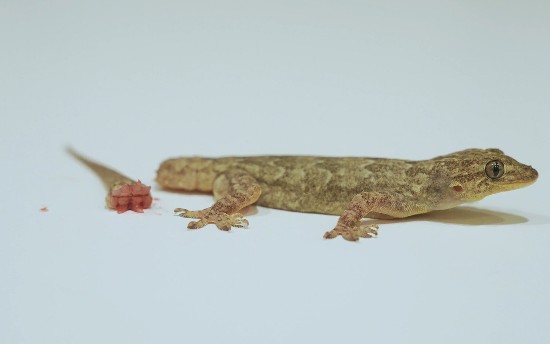At the Keck School of Medicine in Southern California, researchers have been studying how lizards can regenerate a tail after it is grabbed by a predator and subsequently breaks away. The mechanism of epimorphic tail regrowth in lizards has researchers looking at the genetic traits that make this possible.
An article published on August 10, 2023, in Nature Communications, describes research into lizard blastema fibroblasts and chondrogenesis. What are blastema fibroblasts and what is chondrogenesis?
Blastemas are masses of undifferentiated cells that can develop into a limb in amphibians and lizards. Fibroblasts are cells that secrete collagen to support the formation of connective tissues and structures within a body. Chondrogenesis is the ability of some species to regrow cartilage. This capability exists for fish, amphibians and lizards, but not for mammals or birds.
When some lizards lose their tails they can regenerate cartilage and bone (osteogenesis). For the tens of millions including me who live with osteoarthritis, the magical capability of lizards, should it be revealed and transferred to humans, would be an incredible medical advance.
When my osteoarthritic left knee no longer responded to cortisone treatments, and after reading numerous articles in science and medical journals about regrowing lost cartilage, I finally gave up and sought a surgical repair. Today, I walk around with an artificial left knee joint.
But what if I could have been treated with a medical solution that would cause chondrogenesis? Chondrogenesis in humans happens when we are growing but not after adulthood. If we could unlock the lizard’s secrets whose tails are almost entirely made of cartilage then we could do the same (not tails mind you, but cartilage in joints).
The Keck researchers discovered how changes in gene activity take place in fibroblasts that inhibit scarring and encourage cartilage regrowth. A type of immune cell, a septoclast, plays a significant role. Blastemias and septoclasts combine to work together in lizards to stimulate regeneration.
Regrowing a tail is one thing, but regrowing a limb with bone, cartilage, nerve, blood vessels, and muscle tissue is entirely another. At Keck, the researchers implanted septoclast cells harvested from lizard tails into limbs and induced chondrogenesis. The hope is that similar experiments in mice could replicate the same tail-regrowth signalling to regrow limbs.









